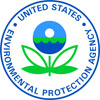BOSTON (July 31, 2023) – The U.S. Environmental Protection Agency's (EPA's) New England Region Office is announcing a grant competition for an "Environmental Justice Thriving Communities Technical Assistance Center" (EJ TCTAC). The agency is offering this funding opportunity of up to $10 million to help communities and other environmental justice stakeholders in the New England states access federal assistance and resources to address environmental and energy justice concerns. EPA Region 1 includes the states of Vermont, New Hampshire, Maine, Massachusetts, Connecticut, and Rhode Island, and 10 Tribes.
"This grant opportunity will create a technical assistance center to empower communities and help them tackle environmental justice concerns in New England," said EPA Regional Administrator David W. Cash. "While many of our urban, rural and tribal communities have identified solutions to the environmental challenges they face, there is a significant need for resources to achieve results. This center will help build capacity and deliver federal funds for environmental justice projects across our region."
"Thanks to DOE's historic levels of funding, we are helping to revitalize disadvantaged communities across the nation by breaking down barriers to address their critical energy challenges," said DOE Office of Clean Energy Demonstrations Acting Director Kelly Cummins. By partnering with EPA, DOE is creating a pathway for every community to access the resources, support, and technical capacity needed to thrive in our nation's transition to a clean energy economy."
In April, EPA announced $177 million in investments for the creation of EJ TCTACs across the country to help underserved and overburdened communities access funds from President Biden's Investing in America agenda. Under this new Region 1 grant opportunity, EPA will partner with the U.S. Department of Energy to select a qualified applicant to deliver much-needed assistance to these communities within New England.
EPA Region 1 issued a Notice of Funding Opportunity (NOFO) for the EJ TCTAC today and will be seeking applications from eligible entities through September 11.
The agency will host an informational webinar for prospective applicants on August 10, 2023 from 4:00 – 5:30 p.m. (EST), which will also include a partnership facilitation session.
Until an EJ TCTAC grant is awarded through this upcoming grant competition, EPA Region 1 communities will be able to access assistance through one of the designated national EJ TCTAC.
Background
Once awarded, the EPA Region 1 EJ TCTAC will be part of the network of the other EJ TCTACs providing technical assistance on a comprehensive nationwide basis. With these critical investments, the EJ TCTACs will provide training and other technical assistance to community groups, nonprofits, local governments, and others to build capacity for navigating federal, state and private grant application systems, writing strong grant proposals and effectively managing grant funding.
In addition, these EJ TCTACs will provide guidance on engagement in governmental processes, community outreach, meeting facilitation and translation and interpretation services for limited English-speaking participants, removing barriers and improving accessibility for communities with environmental justice concerns. Each of the EJ TCTACs will also create and manage communication channels to ensure the communities they serve have direct access to resources and information.
Process
EPA Region 1 will evaluate applications that are received through September 11 and expects to make the award by the end of the calendar year. The award amount will be approximately $10 million for a five-year project period, up to $2 million for each year.
Eligible applicants who can compete under the NOFO will generally include:
- Public and private universities and colleges and other nonprofit institutions of higher education such as community colleges
- Public and private nonprofit institutions/organizations (including philanthropic organizations)
- Intertribal Consortia – a coalition between two or more Indian tribal governments authorized by the governing bodies of those tribes to apply for and receive assistance and participate in self-governance.
Entities which received an award for EJ TCTAC funding under the national competition are not eligible to apply for this opportunity.
The formation of the EJ TCTACs is in direct response to feedback from communities and environmental justice leaders who have long called for technical assistance and capacity building support for communities and their partners as they work to access critical federal resources. For more information on the EJ TCTACs please visit: EJ Thriving Communities Technical Assistance Centers program.
The EJ TCTAC program is part of the Federal Interagency Thriving Communities Network and delivers on the Biden-Harris Administration's Justice40 Initiative to ensure that 40% of the benefits of certain federal investments flow to disadvantaged communities. The new EJ TCTACs will help ensure communities with environmental and energy justice concerns can access President Biden's historic investments in America to address generational disinvestment, legacy pollution, infrastructure challenges and build a clean energy economy that will lower energy costs, strengthen our energy security and meet our climate goals.
Learn more about Environmental Justice at EPA.
from EPA News Releases https://ift.tt/pVcHu2F

